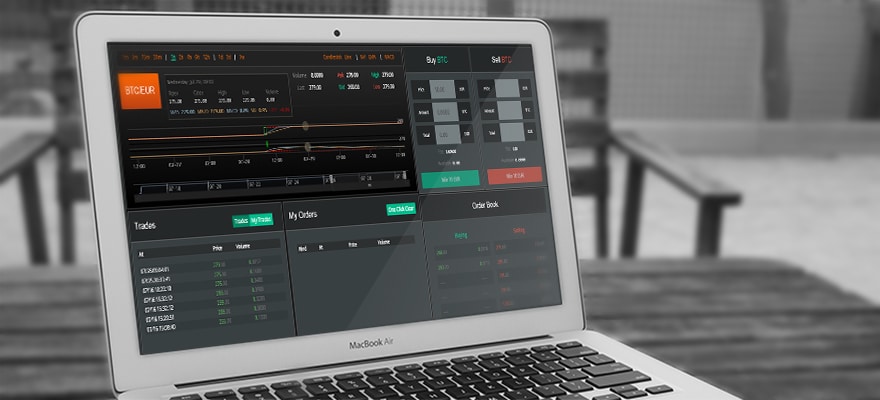
Today we will try to answer a question of concern to many. It is difficult to find specific answers on the network, and there is not a word about the differences. So what is the difference between White Label (WL) and Introducing Broker (IB)?
First, let’s figure out the concept of a Prime broker (prime broker or primary broker), since he is directly involved in both the white label case and the introducing broker case.
As a rule, the largest reputable world banks with significant financial turnover (Barclays Capital, Morgan Stanley, Citi, Deutsche Bank, Bank of America, JPMorgan Chase, etc.) act as prime brokers. These names are familiar to many as brokers often list them as liquidity providers.
Main functions of Prime-broker:
– a number of professional services related to the clearing of trade operations and settlement of transactions;
– providing liquidity;
– operational and technical support;
– servicing hedge funds, investment and prop-trading companies;
– custody services, opening segregated accounts;
– risk management of funds and investment companies;
– management of investment strategies.
With the primary broker sorted out. Let’s move on to the concepts of “White Label” and “Introducing Broker”. Immediately, we note that both are a certain type of partnership with a prime broker. But, if this partnership is offered by a broker or dealing center, you should understand that this particular company will be your prime broker. In the futures market, a Futures Commission Merchant (FCM) acts as a prime broker.
Introducing broker, IB (introducing broker) is a private person or a small brokerage company that works directly with clients only, and all other functions are performed by its prime broker. In other words, IB is a type of partnership between the introducing company that deals only with the front office (customer service department) and the primary broker that deals with the back office (trade execution, clearing, etc.). When a trader contacts an introducing broker, the trading account and its maintenance takes place at the prime broker, and the trader receives consulting services and support from the introducing company. Thus, IB is an intermediary between the main company and the clients.
The main task of IB is to attract and directly work with end customers. In turn, the prime broker pays IB a fee. There are several reward schemes from a prime broker:
– for attracting clients (a fixed fee for opening an account through a referral link);
– for account replenishment (% of the replenishment amount);
– for the client’s activity (% of the volume of transactions or% of the trading spread).
Let’s list the main functions of IB:
– assistance to novice traders with registration and mastering the trading platform;
– advising traders on all aspects of trading and trading features in the financial markets;
– assistance in finding investors, providing trust accounts;
– organization of advertising campaigns, marketing activities.
Both individuals (financial consultants, traders, real estate agents, etc.) and legal companies (small banks, insurance companies, financial companies, real estate companies, etc.) can act as IBs. Most often IB is either individual employees who work through from home, or offices with a small staff of employees. IBs can work with multiple prime brokers at the same time, and prime brokers can work with multiple IBs.
IB Benefits
– Easy start. This type of business does not require large initial and / or permanent investments.
– Independence and freedom. IB is his own boss, he decides for himself how much to work for him and how much time to spend looking for potential clients and, accordingly, forms his own salary level.
– Lack of office. IB can work remotely from anywhere in the world.
– Simplicity and flexibility. IB does not need to register itself as a legal entity. You can safely provide services on behalf of an individual without any additional costs. The regulator of the relationship between IB and the prime broker is a regular contract.
– Lack of risks. IB does not bear any trading or operational risks.
It should be noted that the growth in the number of IBs, due to the factor of competition, significantly influenced the decrease in commission costs for traders. This especially played into the hands of scalpers who were able to reduce their commission costs several times.
We’ve dealt with the introducing broker, now let’s take a look at the White Label term.
White label, WL is a type of partnership for companies and various financial institutions that want to provide services for entering international financial markets under their own trademark (brand) or for those companies that want to expand the range of services provided by a prime broker. The program is suitable for companies that already have their own established customer base. Essentially, WL is a turnkey business.
There are 3 types of WL partnerships: tech, retail, and hybrid.
The WL technology type is a partnership with a technology provider only. The technology provider provides the client and / or server part of the system. For example, if we take the developer of the popular MT4 trading platform, MetaQuotes, and formalize the WL partnership type, then this will be a technological type, since liquidity, quotes, trading risks and much more will fall on our shoulders.
Retail type WL is the most common type of partnership with brokers. It is about him that will be discussed further.
Hybrid type WL consists of the first two types of elements. This model is rarely used and is often provided by institutional companies that do not work directly with retailers and retail brokers.
The main functions performed by a WL partner:
– full customer support;
– own management and administration;
– organization of marketing activities;
– support of the trading environment (your own dealing department is possible);
– maintenance of the back office (infrastructure, personnel).
White Label Benefits
– small initial costs (in comparison with opening your own brokerage company or DC).
– a ready-made business model and investment solutions to increase the range of services;
– reliability of previously developed technologies;
– the trading platform is designed under its own brand;
– a single stream of quotes for all clients;
– the ability to create trading conditions;
– regulation of the remuneration scheme;
– control over the activities of clients;
– confidentiality (both information about clients and information about the prime broker);
– the ability to develop your own affiliate program;
– no market risk;
– full support for IT infrastructure;
– a higher image.
It is easy to guess that this type of partnership is an order of magnitude higher than an IB partnership. Of course, WL requires certain initial investments: you need to register a legal entity, pay monthly support for your back office, work within the law and generally accepted financial rules and regulations. Often, the costs of setting up a company and obtaining WL are comparable to the costs of setting up and registering an offshore company.
But, if we talk about the level of income that a WL partner company can generate, the indicator can be many times higher than that of an IB partner. It should also be noted that if a WL partner works with a licensed prime broker, then the WL partner must fully follow the rules of this license. Otherwise, for violation of the rules of the regulatory body, the prime broker will “receive” twice. For this reason, the WL partner is fully accountable and monitored from all sides by the prime broker. This is a big disadvantage of the WL scheme. You seem to have your own turnkey business, but you still need to report on the state of affairs.
Another significant disadvantage is that all WL clients’ funds are kept in the accounts of the primary broker. But these are not all the disadvantages. The last drawback applies to both IB and WL – it is always necessary to assess the financial position of the prime broker. If the primary broker goes bankrupt, the IB and WL partner will also be liquidated. And if this does not greatly affect IB, especially if it works with several prime brokers, then for WL this is a knockout. Of course, these cases are separately spelled out in cooperation agreements and are additionally insured by independent financial institutions.
What type of partnership to use – everyone decides for himself. With IB, you will get freedom of action, flexibility, the ability to connect several primary brokers, but as a result, earnings will be small. In the case of WL, you get an almost ready-made business with a good income opportunity, with a complete IT infrastructure and its support. As a result, you will be able to implement investment solutions and develop the company, but only freedom and flexibility will always be limited and controlled by your prime broker.





















































